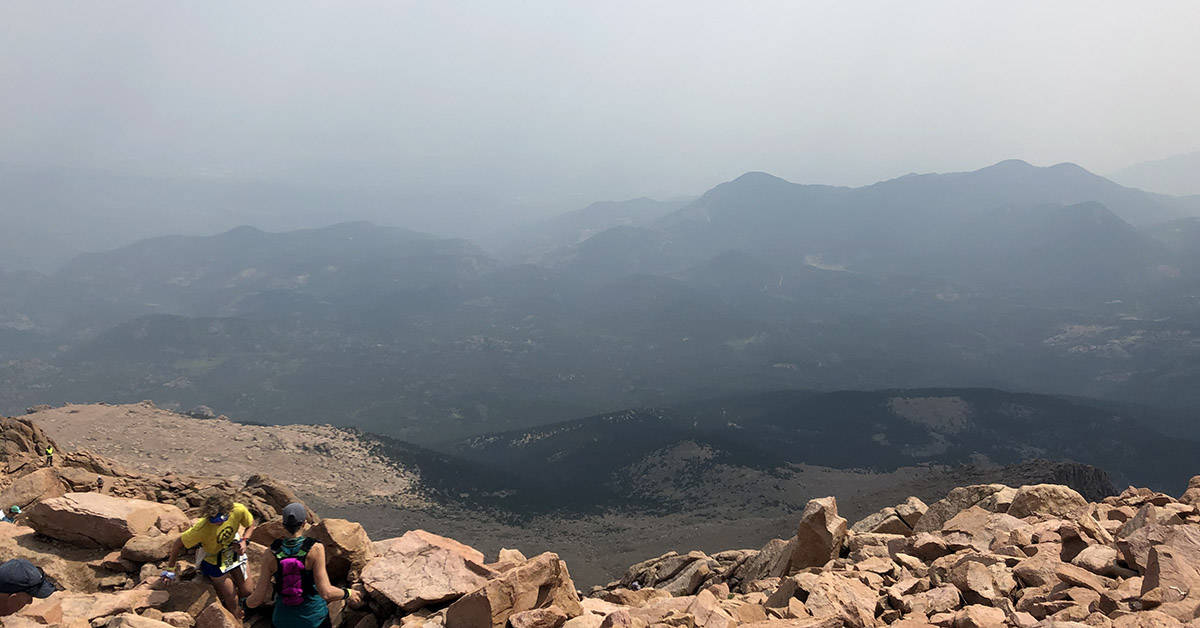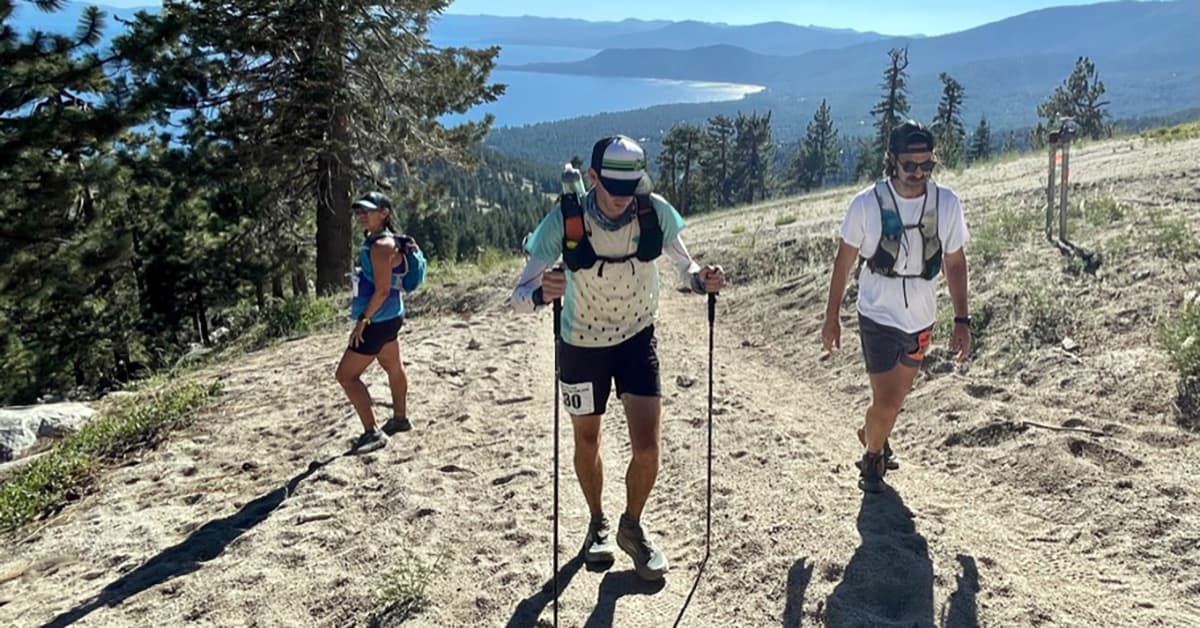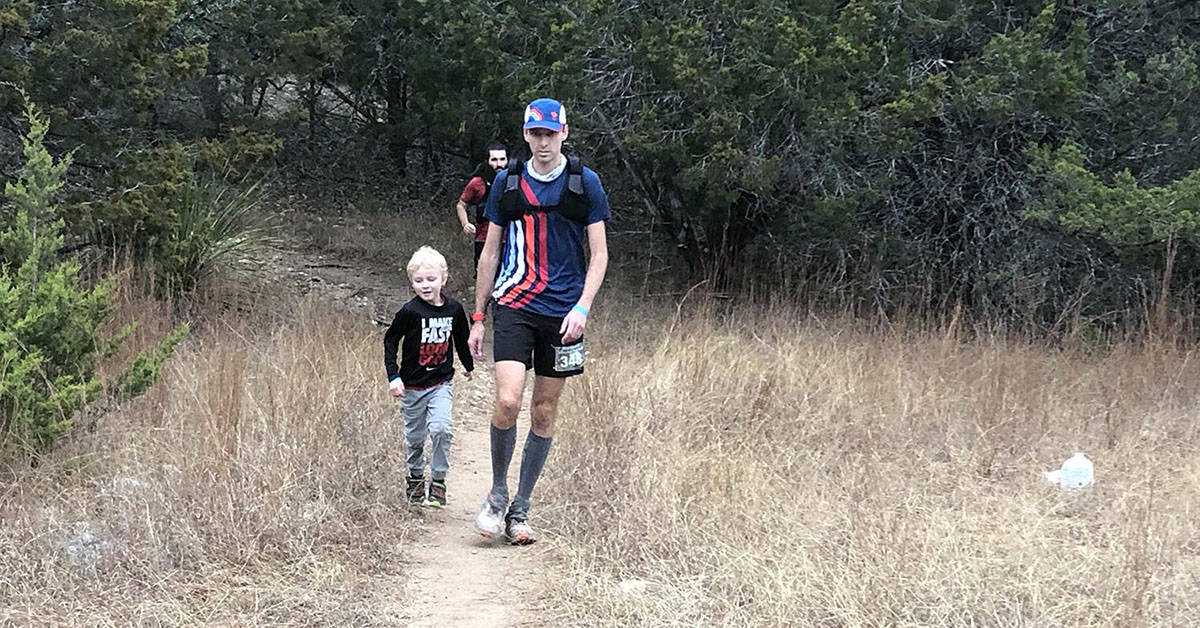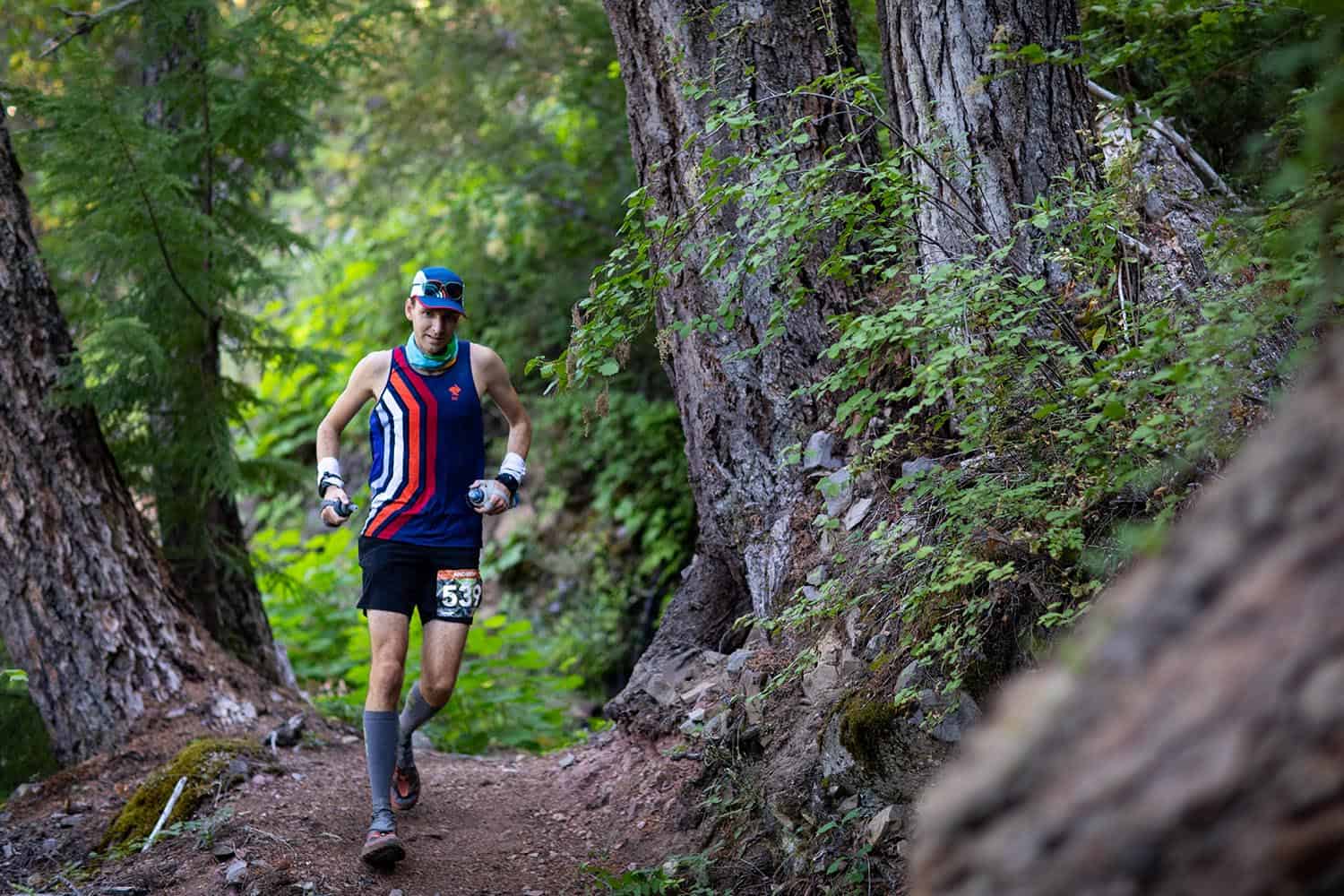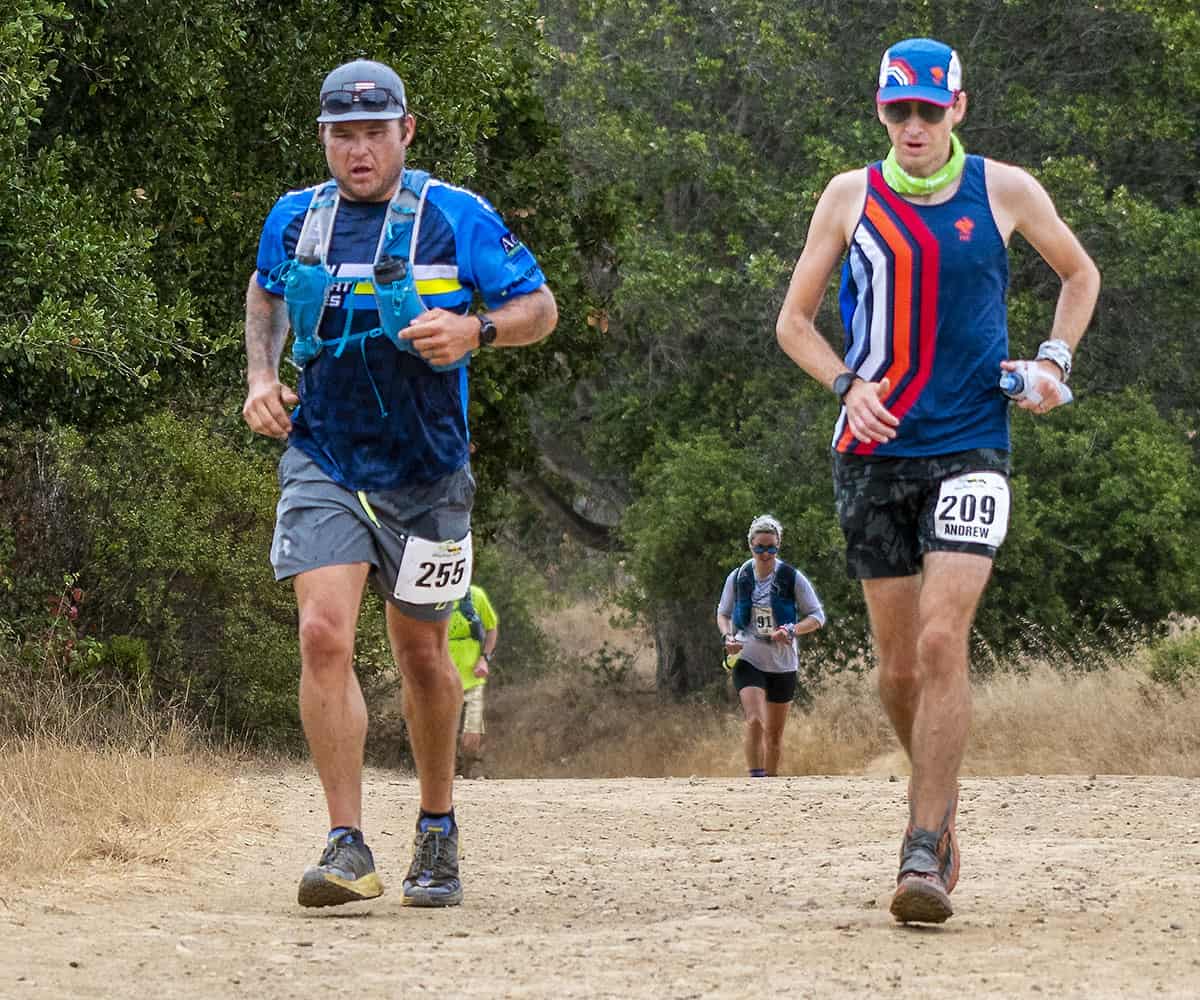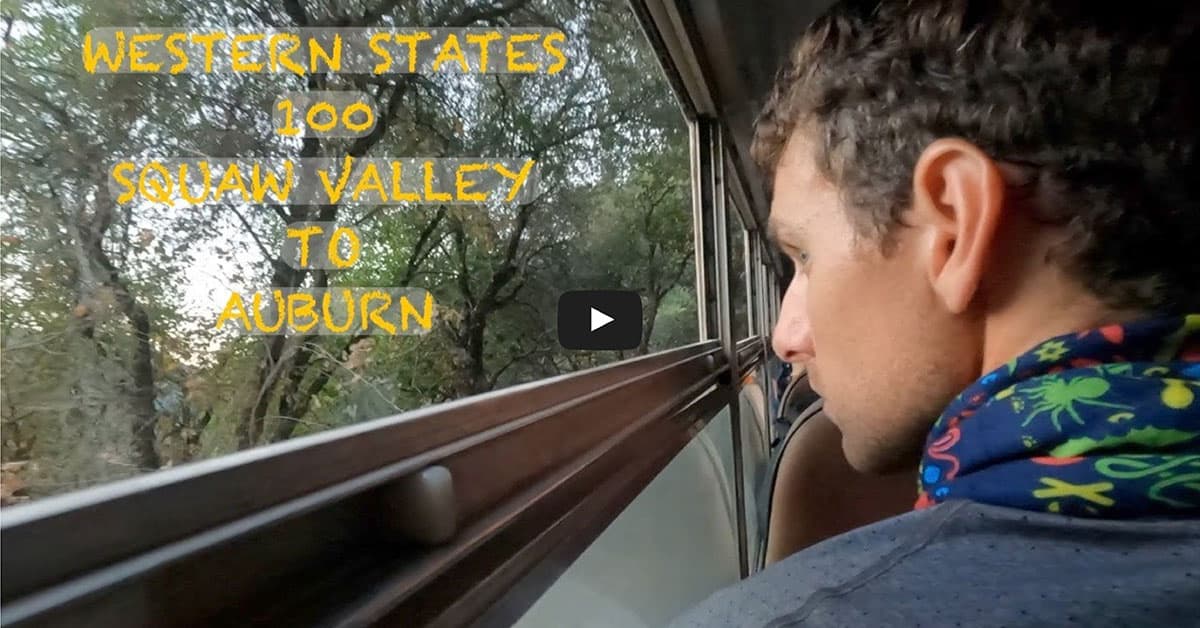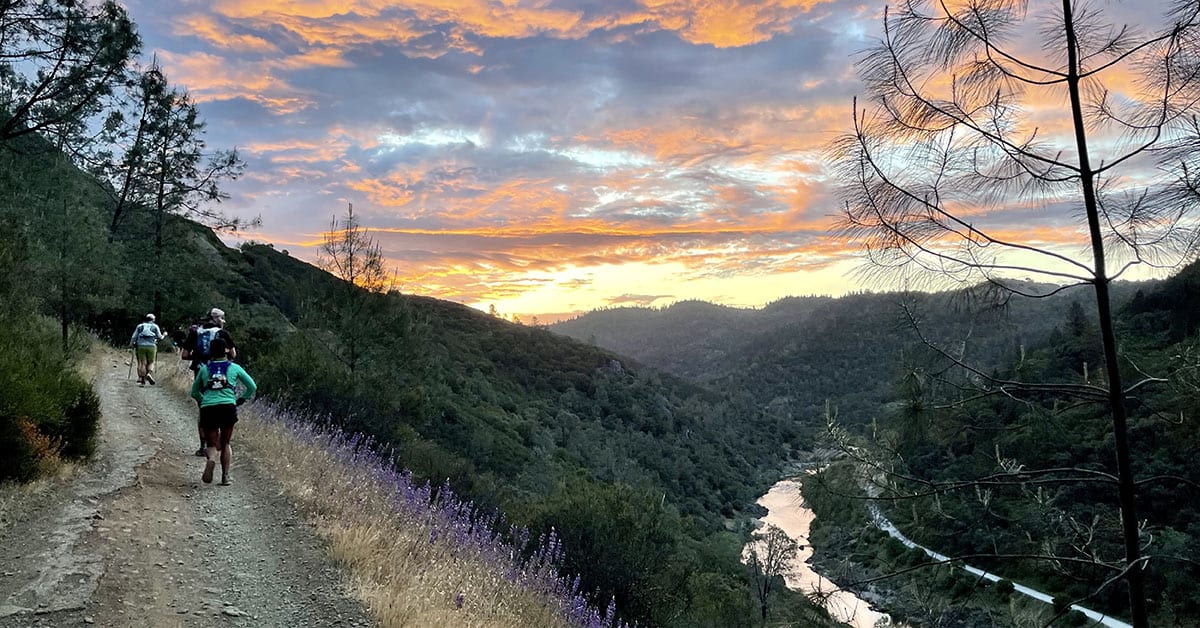Recap of the 2020 Pike Peak Marathon
The Pikes Peak Marathon took place on Sunday, August 23rd, 2020. In a year when many of our favorite races have been cancelled, it was exciting that what has been branded as “America’s Ultimate Challenge” was still taking place. For some locals the race day was a bit warmer than desired and the air was smoky. However, coming from the Central Valley of California the heat was manageable and the skies were far clearer than back home.
Due to the pandemic, I was not able to do any of the races that I had planned that would have better prepared me for the climb to the top and the high altitudes. With that realization, I settled with that fact that it could be longer than desired day and allowed myself to have a very enjoyable day on the trail.
Starting at 6,300-feet in Manitou Springs, the race climbs 7,815-feet over 13.32-miles to the top of Pikes Peak (14,115-feet). Once runners reach the top, they must turn around and descend the exact same trail back to Manitou Springs. Aid stations are every 2 to 4 miles and were well supplied with water, Gatorade, light snack items, and excellent teams of medical support and volunteers. Despite a difficult year to manage in-person events, the Pikes Peak Marathon crew put on a top-notch race!
Race Start to No Name Creek
At the starting line, there were 9 waves of approximately 85 runners per wave. In an attempt to practice social distancing, each wave was then broken up into groups of about 10 runners each. A runners starting position was established by the qualifying time that they had submitted to the race prior to race day.
Not thinking very much of my starting position in the field, I had submitted my time from the 2019 Canyons Endurance Run 100K. The Canyons 100k is not only a long race, but it also features 15,000 feet of vertical gain. My time from this race was not particular good against the field, which hurt my starting position for the Pikes Peak Marathon.
When the Pikes Peak Marathon announced that I was starting in the sixth wave, I felt like I was too far back and was going to be spending the entire day trying to pass runners. As you read on though, by the end of the day, I was more indifferent about this starting position.
The Pikes Peak Marathon starts on Mantiou Avenue and proceeds to Ruxton Avenue where runners are treated with a smooth, but uphill road climb for the first 1.25-miles. Mostly a run, I covered this section in roughly 12-minutes. As I reached the start of the dirt trail, I found myself more in the middle of the fifth wave of runners. Much of this opening section of trail is narrow and steep, making passing very difficult.
Over these 3 miles the average grade is around 13.4% and runners have to climb approximately 2,150 vertical feet. Every once in a while I was able to move around a couple runners and establish more of my own pace, but for the most part I found myself moving slower than desired. Looking to stay positive throughout the race. I focused on my hydration and efficiency has I hiked much of the way up to No Name Creek.
No Name Creek (4.3 total miles)
Section Split = 1:09:10
Total Race Time = 1:09:10
Race Average Pace = 16:05/mi
At the No Name Creek aid station, I was not in need of any supplies, so I took the opportunity to advance my position as much as possible. As a large group of runners were pulling into the aid station to get refills of water, I immediately quickened my pace and found myself on more open trails on the other side of the aid station.
No Name Creek to Barr Camp
After passing through No Name Creek, the next section of trail up to Barr Camp is a bit easier on the legs. Approximately 3.3 miles long, the average grade comes down to 8.3% and the vertical gain is around 1,450-feet. This slight backing off of the terrain combined with runners now more spread out over the trail allowed me to settle into my own race. I began pushing a hard running pace when the incline was less and continued conserving energy when the trail was steep. I was now more comfortable with my energy output vs. total time to this point in the Pikes Peak Marathon.
Barr Camp = 7.6 total miles
Section Split = 0:48:49
Section Average Pace = 15:15/mi
Total Race Time = 1:58:00
Race Average Pace = 15:31/mi
From reading about Pike Peak Marathon and looking over past results, I knew exactly what my time from the start to the Barr Camp aid station meant. It was going to be a long day! I read several race result analyst that showed that your total time through the first 7.6 miles was approximately 25-30% of your total time for the race. I was crossing through this point just under 2-hours. So by that research, I was going to be out here for 7.5 to 8-hours. At this point in the race, I did not let this knowledge dampen my spirits. I was enjoying the day and feeling good. I was also feeling very thankful that I had packed 900 calories of Huma Chia Energy Gels and a 250 calorie Clif Bar. This would keep me fueled for the now eminent long day on the trail.
Barr Camp to A-Frame
From Barr Camp to A-Frame the incline kicks back up again to an average of 13.1%. This section of trail is about 2.6 miles long and includes a vertical gain of 1,800-feet. At the start of this section, I was now at passing 10,000-feet in altitude and my body was feeling the effects of it.
As mentioned, my training up to the Pikes Peak Marathon did not include a lot of climbing, and it definitely did not include any time at this kind of altitude. Before the pandemic cancelled races and made it hard to travel, I had planned on using a half dozen 20-50 mile trail races, the Westerns States 100-Mile Endurance Run, and some frequent trips to the High Sierras in California to prepare for this experience.
The reality was that I only managed a couple local trail runs that included 3,000-5,000 feet of vertical gain. And, the only time that I spent above 8,000-feet in altitude was a 20-mile trek up and down Cloud’s Rest in Yosemite National Park. From Barr Camp to the top and back was going to be a really big challenge to stay upright!
A-Frame = 10.2 total miles
Section Split = 0:59:43
Section Average Pace = 23:53/mi
Total Race Time = 2:57:43
Race Average Pace = 17:25/mi
As my pace from Barr Camp to A-Frame shows, I was mostly hiking at this point in time. I become completely unconcerned with passing or being passed and on what my overall finish time was going to be for the day. My focus was 100% now on my hydration, rate of breathing, and conserving as much energy as possible to get all the way to the top.
A-Frame to Summit
After the A-Frame aid station, the terrain of the trail becomes more loose gravel and eventually evolves into small sections of large rock step-ups known as the Golden Stairs. From A-Frame to the top is 3.1 miles and a vertical gain of another 2,150-feet at an average grade of 12.4%. It was at this point in the race that I realized my projected summit time by the race of 4:47 was going to be pretty close to accurate.
In 2009, I had completed the Pikes Peak Ascent in 3:36, but I was 11 years younger and much different runner back then. Back then, I had yet to complete an ultra-marathon and my only focus was continually breaking 16-minutes in the 5K, getting under 1:20 in the half marathon, and trying to improve upon a 2:42 marathon PR.
A much different runner now in 2020, I somehow still thought that I would be able reach the summit of the Pikes Peak Marathon faster than 4-hours. I spent this last section of trail to the summit thinking about how much my running career has evolved over the past 29 years from youth track meets to trail ultra-marathons.
About this time, the lead runners started showing up. Proper trail etiquette is to give the downhill runner the right of way and people up slope would call out “runner!” to give the those still coming up time to move out of the way. I used these opportunities to pause and lean against a rock. At first, the downhill runners were far and few between, but after a while they became a very steady stream.
Managing the loose gravel trail and the 32 rocky switchbacks to the summit was not particular treacherous, but I was beginning to struggle more with the altitude.
I was now feeling occasional bouts of lightheartedness or dizziness. Each time this sensation came on I would first significantly slow my pace and energy expenditure. If this change in pace wasn’t enough to feel better within 1-2 minutes, then I found myself plopping down on a big rock to catch my breath. I ended up taking about a half dozen sitting or standing breaks over the final 2-miles to the summit to keep myself from going too far into energy debt and risking altitude sickness.
Summit = 13.32 total miles
Section Split = 1:48:29
Section Average Pace = 32:41/mi
Total Race Time = 4:46:13
Race Average Pace = 21:29/mi
Summit to Barr Camp
After a brief rest at the summit to take in the view and catch my breath, it was time to start the descent back to Manitou Springs. Right away I wanted to start pushing the pace down the mountain, but my body and lungs were continuing to remind me that I was at a high altitude.
My legs were feeling good, but I decided to continue to keep the pace slow until I was back down to a more manageable altitude. This conservative effort continued all the down to Barr Camp where the course finally drops below 10,200 feet again and the trail becomes more dirt than rock and gravel.
A-Frame = 16.41 total miles
Section Split = 0:58:35
Section Average Pace = 17:52/mi
Total Race Time = 5:44:49
From the Summit down to Barr Camp was approximately 5.69 miles. While I was still moving conservatively down to the lower altitude, I was able sustain several longer sections of running. Over these miles, my legs continued to feel strong and ready to run hard, which gave me a great lift in energy. My body was showing me that my training throughout the year has been strong. My overall fitness levels were high. I just wasn’t ready for the altitude of the Pikes Peak Marathon.
Barr Camp = 19.01 total miles
Section Split = 43:04
Section Average Pace = 16:34/mi
Total Race Time = 6:27:53
Race Average Pace = 20:24/mi
Barr Camp to No Name Creek
Coming into Barr Camp aid station, I finished off the last of my 1100 calories of nutrition that I had carried with me for the race. To this point, I had only consumed the calories that I brought with me and the only support that I needed from the aid stations was refills of my two water bottles. My energy levels were feeling good and I was not experiencing any leg cramps from the downhill effort.
No Name Creek = 22.31 total miles
Section Split = 40:33
Section Average Pace = 12:17/mi
Total Race Time = 7:08:26
Race Average Pace = 19:33/mi
At the beginning of the race, I had set my watch to show a predicted finish time for achieving 26.3 miles. In the 3.3 miles from Barr Camp to No Name I started looking at the projected time and setting new goals for what I wanted to achieve. The projected time was fluctuating between 8 and 9 hours, which raised my frustration levels, but also gave me motivation to push harder. I kept telling myself I was not going to be out here for more than 8-hours and used that thought to propel me down the mountain.
No Name Creek to Finish
It was now mid-afternoon as I was covering the final 4-miles of the Pikes Peak Marathon back to Manitou Springs. Temperatures were in the high-80s to low-90s, but this did not seem to bother me any as I pushed the pace faster. It was over this last 4-miles that I did not notice the smell of smoke in the air again, but like the heat it did seem to be effecting my efforts.
The steep (13.4% average grade), but relatively smooth trail that I had to climb earlier in the day was now allowing me to use one of my strengths to finish off the race. I covered the final 4-miles in a total time of 33:38 (average pace 8:38/mi).
I was passing lots of runners again and every once in a while someone was trying to catch onto my pace. Each time someone latched onto my pace it gave me motivation to push effort up another notch. My legs felt fresh, my breathing was smooth, and I was descending with a purpose. To see how far under 8-hours I could finish!
With about a mile to go my feet were back on the paved streets of Manitou Springs. It was at this point that my legs started to complain a little bit more with the harder surface, but I was now so close to the finish line it didn’t matter. I crossed the finish line in total time of 7:42:04! Much longer than I had expected to take, but overall happy with the result.
I had stayed positive all day long. I had kept myself from pushing too hard at the high altitude, which could have been devastating for finishing the race. I had kept really good control of my calorie intake and hydration from start to finish.
Finish = 26.3 total miles (Garmin 25.7 miles)
Section Split = 33:38
Section Average Pace = 8:38/mi
Total Race Time = 7:42:04
Race Average Pace = 17:38/mi
As I prepare for Javelina Jundred at the end of October 2020, staying positive, keeping up with hydration/nutrition, and finishing strong are the most important factors. I chalk the 2020 Pikes Peak Marathon up as a great race training effort toward a larger goal!
A Training Plan that Works for You.
Our collection of running plans will help you train year-round. From 5k to a 100-mile ultramarathon, we have a training plan built for your experience level and goals. Every plan is delivered via Final Surge, allowing you to sync workouts across devices, receive daily reminders of workouts and activities, and analyze workout and target zone details. Get started today with a training plan built for you, view our running plans here.


